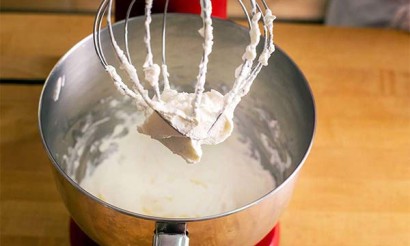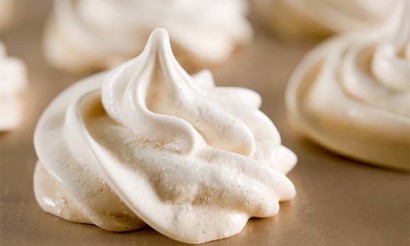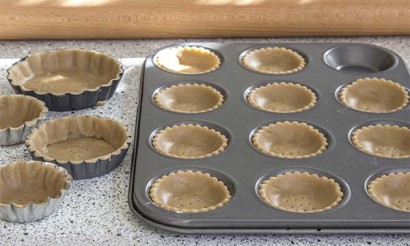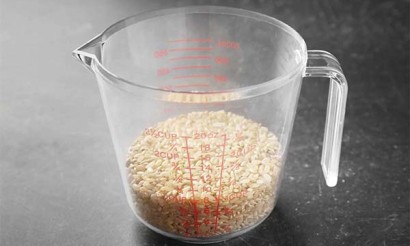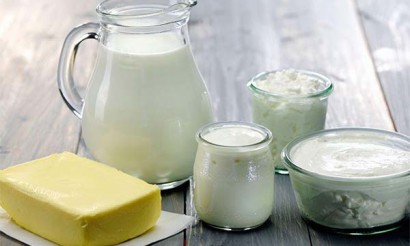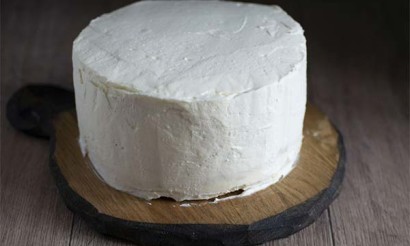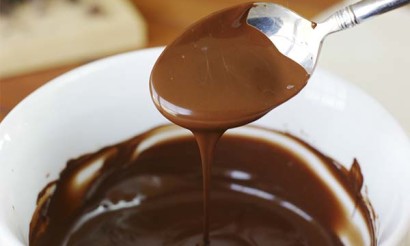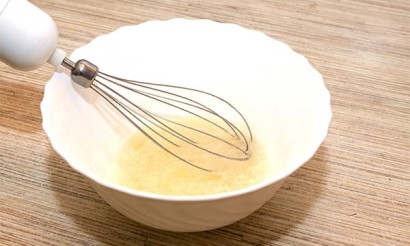How to remove bitterness from onions: 7 ways
Onions from seven ailments - so characterized the forefathers of this vegetable. In ancient times, folk healers noted that it is not only tasty, but also has a lot of useful properties - from improving digestion and improving appetite to the ability to resist colds, protecting people from bacteria and viruses.
Today it is impossible to imagine a soup or salad without onions. However, not everyone likes its pungent taste, and the bitterness, which to some seems like a fabulous delight, others can't stand. Especially picky children - some little cranky will push away the plate every time he feels there onion smell or taste. Therefore, mothers and grandmothers have to look for ways to get rid of onion bitterness.
Causes of excessive onion bitterness
As long as the onion is not sliced, it is a shiny, pleasant-looking vegetable. As soon as you break its structure with a knife - immediately a pungent smell spreads actively, from which it blows out a tear. In this way the plant tries to protect itself from damage. Nature has created such a protective mechanism, whereby not only phytoncides useful for the body are released, but the cells of the sulfonic acid contained in the bulb are destroyed. This gives rise to chemical reactions that form gas, a component of which is sulfuric acid, which irritates the mucous surface of the eyes.
Onion bitterness is also a kind of "protest" of the plant to the cutting, that is, the destruction of its cells. So why can onions be very bitter and quite tolerable or almost sweet? There are several answers to this question.
- First, the degree of bitterness is determined by the onion variety. There are varieties strongly bitter - they are called spicy, semi-spicy, and sweet - with a large content of natural sugars.
- Secondly, even the bulbs of the same variety can vary greatly in the degree of bitterness - it all depends on the growing conditions. In particular, the amount of phosphorus fertilizer applied to the bed is of great importance. Their lack has a bad effect on the taste of the vegetable, it begins to be very bitter.
- Thirdly, the plant should be abundantly watered. The lack of water in the bulbs increases the concentration of all components, including those that give them bitterness, and essential oils. Therefore, experienced gardeners necessarily pay great attention to watering, especially in hot windy weather.
- And, fourthly, the amount of bitterness is influenced by the timing of harvesting. The fact is that by the time of ripening, near the end of summer, the concentration of essential oils reaches its maximum, so the autumn, late onion is more bitter than its summer relative.
It should be noted that the more bitter varieties - such as Centurion, Pogarsky, Hercules, Sturon - contain more phytoncides that successfully fight against pathogenic microbes, including those capable of dealing even with the causative agent of tuberculosis - Koch's bacillus. Therefore, they are more useful when using them as a prophylactic for seasonal colds. And such varieties are stored better, medium-sized heads of spicy and semi-spicy onions can last up to 10 months without losing their commercial appearance and consumer properties, while sweet onions can barely survive for 5 months.
Therefore, for the most part, both private individuals and agricultural enterprises prefer to grow spicy varieties of onions.
How to remove bitterness from onions
It is possible to remove bitterness from onions in several ways. There are hostesses who have got used to treat the onion in the microwave for literally 10 seconds, heating at medium power. It is important not to overdo it, so that the vegetable does not become soft, and cool it before eating it.

Some families get rid of onion bitterness by putting the peeled vegetable in the refrigerator. After a few hours, the onions will taste softer and remain juicy. To speed up the process, you can put it in the freezer, but not for long - just 3-4 minutes, so it does not have time to freeze, otherwise not only the bitterness will be gone, but also the onion flavor.
Gets rid of the bitterness and from the onion, which was cut into quarters and put for a few minutes in water acidified with vinegar or citric acid.
If the onions are planned to be used in a soup puree, there is no need to worry about removing the bitterness from it beforehand: it will go away by itself during boiling.
But the most traditional ways to get rid of bitterness are blanching in hot water, frying, and passaging.
Using boiling water.
To make onions not bitter, most hostesses blanch them - that is, put them in boiling water. This method was used by grandmothers, it is simple, hassle-free and does not require additional products.
The easiest way to blanch is to pour boiling water directly from the kettle onions, folded in a colander. After such a hot shower to provide and cold shower - that is, pour cold water from the tap.
But there is a more proper way of blanching. You need to bring the water to a boil in a pot, turn off the fire under it and pour into the boiling water chopped onions. After a minute, drain the water with a colander, and quickly cool the onions in a bowl of ice water. Do not keep in the boiling water longer, the vegetable may boil a little on the outside.
Onions prepared in this way will acquire a softer taste, will cease to be bitter and will fit well in a salad of fresh cucumbers, tomatoes and sweet bell peppers.
But there is a significant disadvantage to this method of getting rid of bitterness - such a vegetable will not have a juicy crunch.
To remove bitterness with boiling water, some hostesses use more vinegar: they put onion slices in it immediately after they have been exposed to cold water, and leave it for a quarter of an hour. Use the vegetable after draining the vinegar.
There is a method that combines both boiling water and vinegar. You need to cut rings of onion. In a saucepan in a glass of water, dissolve 3 teaspoons of granulated sugar and half a teaspoon of salt. As soon as the water begins to boil, add 50 ml of vinegar, turn off the heat and add the onions. Let it stay in the boiling water with the vinegar for 5 minutes, then drain the liquid with a colander, and rinse the onions with cool water.
The best way to prepare the vegetable in this way is to combine it with hot and cold fish dishes.
Roasting
Roasting can remove the bitterness from the onion, which is planned to use as a stand-alone snack - for example, for beer. To prepare delicious onions, you need to prepare a fryer, mixing equally melted butter with sunflower oil or olive oil.
The mixture of oils should be heated on the fire, necessarily in a deep frying pan, as it will foam when the product is lowered into it. Before frying, cut the onions into not very thin rings or half rings, they should be about 3 mm thick. You can soak them in white wine for a while before frying and then roll them in flour. This is not necessary, but such a snack will be much tastier and more interesting than just fried onions. Carefully, trying not to burn yourself, put the rings in a deep fryer, you should not put a lot of them, they should float in the hot oil. And for the process to go evenly and the hot oil does not bypass a single inch of onion, the vegetable needs to be stirred.
Fry the slices until golden, then put them on a paper towel to remove the excess oil.
Using salt
There is another uncomplicated and inexpensive way to get rid of onion bitterness. Ordinary table salt will help in this. Take a tablespoon of it, dissolve it in a glass of water and pour the resulting liquid over an onion chopped in small pieces or half rings in advance. The more finely chopped the vegetable, the faster the bitterness will disappear. For a finely chopped onion, 10 minutes is enough. After this time, rinse with cold running water.
Passing .
It is also possible to make onions by non-bittering passaging - that is, by heating in a frying pan. You need to cut the onion as required by the dish, in which it will be used in small pieces, half rings or rings - and send it to a frying pan with vegetable oil, where it should briefly hold over the fire. It is necessary for the onion to become transparent, but not fried. To do this, the process should take place with frequent stirring. Between stirring, the pan should be covered with a lid.
Such an onion especially reveals its flavor and aroma in warm salads with meat or mushrooms.
How to get rid of the bitterness of green onions
Green feathers are much more delicate than onions, so they must be handled much more delicately. They will not withstand scalding with boiling water - they will boil very quickly, lose aroma, their taste will become quite different, the color will suffer, and a significant part of the vitamin C contained in green feathers will be destroyed. Therefore, other methods are required to remove the bitterness.
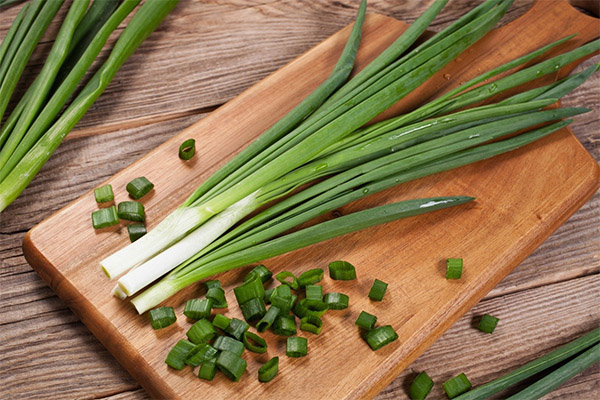
When the green onions are sliced, they should be gently and lightly crushed with a potato grinder or rolling pin, or if they are not available, just with your hands. After that, pour a small amount of melted butter. To add to a plate of soup, a warm meat salad or to potatoes, meat or fish, green onions are also good in this form. To use in a fresh cucumber and tomato salad, it is better to rinse the feathers with warm water.
How to remove bitterness from red onions
Red onions are rarely bitter, most likely this happens precisely because of a lack of watering or phosphorus fertilizer. With quality farming, red varieties usually contain little essential oils and lots of sugars, so they are planted mostly for salads. In a hot dish, such a vegetable quickly loses its beautiful color and becomes dirty-gray. For the same reason, it can not be treated with boiling water.
Therefore, if red onions still seem bitter, to get rid of bitterness should be a 10-minute soaking either in salt water (a tablespoon of salt per glass of water), or in water with the addition of citric acid (half a teaspoon per glass of water).
It is also possible to marinate red onions - his color will not lose in the slightest, rather, it will become brighter and more interesting, and the flesh itself will have a deeper taste, will acquire a pleasant piquancy.
How to pickle onions to remove bitterness
Marinating is good to remove bitterness from the onion, it becomes more flavorful, spicy, juicy. The marinade can be prepared with or without vinegar.
With vinegar.
A teaspoon each of sugar, salt and vegetable oil is needed per glass of vinegar. Stir the ingredients until the crumbly substances dissolve and put the onions in the resulting marinade for half an hour. Vinegar should not be very concentrated, its strength can not exceed 3%. Store-bought 9% vinegar must be diluted with water in a ratio of 1:3.
You should not rinse the onions after taking them out of the marinade. It can be used immediately in salads, garnish cut herring or other appetizers.
Without Vinegar
- Pure lemon juice freshly squeezed from the fruit can be used as a marinade. How much to take is determined by the amount of onion slices. A teaspoon of granulated sugar can be added to the juice. In such a marinade soak the slices for half an hour. The juice will perfectly remove the bitterness and sharpness of the onion, while remaining as flavorful and sour as it was at first, without a drop of bitterness and onion odor. Such juice, when the onion has already been removed from it, if necessary, can be used as the basis for a salad dressing.
- Put chopped onions in a bowl (preferably glass or ceramic), add half a teaspoon of salt and a whole teaspoon of sugar, sprinkle 10-12 crystals of citric acid and pour a tablespoon of lemon juice. Pour a little boiling cooled water into the bowl - so that it covers all the onions. Stir it. If desired, pepper the marinade and add spice herbs. Soak the onions in this solution for 30-40 minutes, then drain the liquid, and rinse the vegetable with cool water and use for a salad.
- To remove the bitterness from the onion, which is planned to be used for cooking kebabs, you can use kefir. However, it will take more time than marinating with vinegar or citric acid, because the effect of kefir is much milder. Mix a glass of kefir in a bowl with half a small spoon of salt and spice herbs, put in it the onion cut into rings and mix. Leave to marinate for an hour, after which rinse the vegetable with running water.
- Another easy way to marinate onions is to soak them in tomato juice. But the purchased juice from the package is no good, it has a lot of additives of unnatural origin and sugars. It is better to squeeze the juice from tomatoes from your own garden, and, to do this, you can just twist the tomato in a meat grinder, do not even have to remove the seeds. Cut the onions in rings or half rings (more finely chopped pieces will be difficult to extract from the juice). Pour a glass of juice into a bowl, pour in a teaspoon of salt, pepper and spices. Put the onions in a bowl, mix with the juice and leave to marinate for 40 minutes. When the specified time has elapsed, remove the vegetable with a skimmer, rinse and use in a salad or as an additive to fish or meat dishes.
Sweet varieties of onions
Sweet onions are not really sweet in the usual sense. In general it is an ordinary onion, but it has a milder flavor, lacking harshness, bitterness, and obvious spiciness. It also cuts the eyes, it causes tears - but not as intensely as its spicy and semi-spicy relatives. The reason is that sweet varieties have less sulfur-containing and spicy essential oils. Sweet varieties also have less phytoncides that create a protective barrier for microbes and viruses. But sweet heads are not inferior to spicy ones in terms of vitamin content.
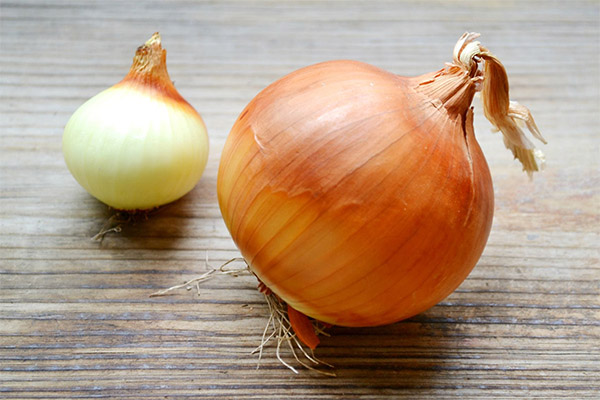
The list of sweet onions is dominated by varieties with white or red outer husks and flesh. Their bulb shape is most often elongated, oval.
The more sugars in the onion, the less spicy and bitter it is, so it is better suited for making salads than other varieties.
Chives
The very first chives to emerge in early spring are the chives - this species is a perennial. If you strictly approach the botanical classification, it is more of a perennial herbaceous plant, which in the middle belt of Russia delights with its young fresh greens as early as the beginning of April and the whole month of May - up to the first harvests of real onions. People have given it several other names, so it is most commonly known as onion-cutter, bush onion or Siberian onion.
They are called bush onions because they do not grow as individual bulbs, but in small, fairly dense colonies. It is not pulled completely out of the ground, but only cut off the greenery, hence the name schnitt - in German it sounds like "cut onion".
Its greens are so thin and delicate that it is best eaten fresh, without heat treatment. But the first spring salads, thanks to chives, are full of coveted vitamins without the slightest trace of bitterness. Later this onion becomes very decorative, throwing out dozens of round inflorescences of white or purple color.
Although these onions are considered perennials, it is better to renew their plantings either annually or every two years by digging them out of the ground, dividing them into small groups and replanting them - because of the tightness in a large dense cluster the bulbs begin to press each other closer to the ground and can freeze in a harsh winter.
Shallots .
As soon as the schnitts are out of season, the fresh greens of shallots come to the table. This type of onion is widespread in French cuisine, which is famous for its sophistication, and it is appreciated for its lack of pungent smell and bitterness.
Popularly, shallots are also called family, nesting or magpie - for the fact that an entire family grows from one bulb - up to 20-25, maybe even more bulbs, each of which produces a bundle of tender feathers. The average size of a shallot bulb is 1 cm to 3 cm in diameter.
Unlike chives, this is an annual onion, it is planted either in late fall or early spring, you can even plant it in barely thawed soil. It tolerates frosts well, does not shoot and fairly quickly gives the first harvest.
Shallot is much more resistant to heat treatment than chives, so it is suitable not only for salads, it is put in the first and second courses.
But even among the onions with usual-sized heads, there are many varieties that contain a lot of sugars and therefore do not require additional treatment to remove bitterness.
Usually the bulbs of sweet varieties are larger and fleshier than those of sharp and semi-sharp ones, and they ripen earlier, although in general there are early-ripening onions as well as medium- and late-ripening ones among them.
Of the red varieties, Crimson Ball, Retro, Campillo, Greatful and Black Prince are particularly mild, although Red Baron predominates in the gardens of the average dacha owner. Of the most popular whites, Comet, Globo and Spanish 313 should be noted.
Not every sweet variety can grow in all latitudes. Thus, no matter how much the gardeners near Moscow tried to cultivate the Yalta variety brought as a souvenir from the Crimea, nothing good came out of this venture - there is no normal harvest, and the taste of bulbs grown in the middle belt is strongly inferior to the southern ones.
But in general, among the sweet ones there are some that can tolerate late spring frosts quite well and are quite unpretentious.
- Comet - if accuracy is observed, this is not a variety, but a hybrid. It belongs to the universal salad onions. Appearance is attractive, it is not difficult to cultivate, as it has undergone adaptation for different latitudes, including normal development in the middle belt of the country and is characterized by resistance to fungal diseases - pink rot and fusarium. The bulb is white in color, the scales are juicy, tightly pressed to each other. Harvesting is possible in 3.5-4 months after the appearance of the first sprouts, but the Comet, like all sweet varieties, is stored not very long - no more than half a year, so before the New Year holidays, the onion is better to eat, so as not to lose. It can be used in salads and cooked, which means it can be used in any first and second courses and side dishes.
- Spanish 313 - this late maturing variety is grown in many regions - from southern Moldova to the Moscow region. In more northern areas it does not produce consistently rich harvests in the open ground, here it can be cultivated in greenhouses. It is also a white variety with a dense, juicy bulb, but it is slightly sharper than Comet. For culinary purposes, it is better to use it fresh, without heat treatment.
- Globo, another of the best white onions, is a late maturing variety. It is valued not only for its high level of resistance to traditional fungal diseases, but also for its juicy flesh and lack of the characteristic onion smell. In addition, Globo stores well and has a large bulb size of up to 800 grams.
- Campillo is a red onion of medium maturity, it is harvested at the end of August. Requires fertile soil, sun and enough moisture. The sweet delicate taste has a subtle tanginess. The bulbs have a slightly purple hue. But the coloring red pigment does not stain your hands and does not leave traces on dishes. It can be stored longer than the usual sweet varieties - up to 7-8 months.
- Red Baron - this onion is grown on every second homestead plot. He is loved by gardeners for its unpretentiousness, high yield and bright taste, perfectly suitable for kebabs and salads. At the same time, it is easy to use, because each bulb is not very large, it can be used at once, without thinking where to put the rest of the head. Properly dried Red Baron crop can last till the beginning of February, but it should be regularly checked up to remove unsuitable for further storage.
- Candy is a hybrid variety of yellow sweet onions. Not only do they have a sweet taste, but they also mature very quickly, ripening in less than three months after planting and in two and a half months after the first sprouts. Its agronomy is uncomplicated, Candy does not require much attention, because it is very unpretentious. Its greatest yields are achieved by gardeners in the southern regions, although it is quite suitable for growing in the middle belt as well. But these onions do not store for long - a maximum of six months, and this is probably its only disadvantage. Candy has very thin delicate outer scales, which are very easy to remove, and the inside of the bulb is white and juicy. These onions are great both as a salad option - that is, for eating fresh - and as a component of hot dishes.
Not all of the above varieties are suitable for Siberia and regions located north of the Moscow region - where natural conditions limit the possibilities of gardeners. But even for them, there are varieties of sweet onions that are able to give a crop even in a not very favorable environment.
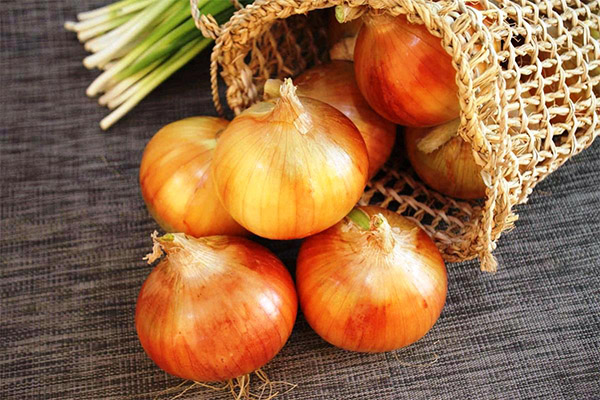
- Siberian annual - the name of this variety speaks for itself; it is zoned for Siberia and therefore winter-hardy, that is, it can tolerate both spring return frosts and the cold of late summer. Although usually before the onset of cold and rain, it has time to ripen, for it is an early-ripening variety. It has a good keeping quality and can be stored until April. Can not say that the Siberian is absolutely sweet variety, the taste of a slight tang is still present.
- Bessonovsky is a variety long known not only to Siberians, but also to dacha residents near Moscow. It has small bulbs with yellow surface scales, sweet to the taste and at the same time spicy, spicy - as such there is no pronounced bitterness in it. It can be stored for about 9 months.
- Strigunovsky is one of the oldest Russian varieties. It may seem spicy to southerners or residents of the middle belt, but for Siberian conditions it can be considered almost sweet. The bulb is yellow on the outside, the surface scales are firm, while the flesh inside is white, dense and sparse. The variety is fairly drought-resistant. Ripens Strigunovsky quickly, stores no more than 6 months.
«Important: All the information on this site is provided solely for introductory purposes. Before applying any recommendations, please consult with a specialist. specialist before using any of the recommendations. Neither the editors nor the authors shall be liable for any possible harm caused by materials."


